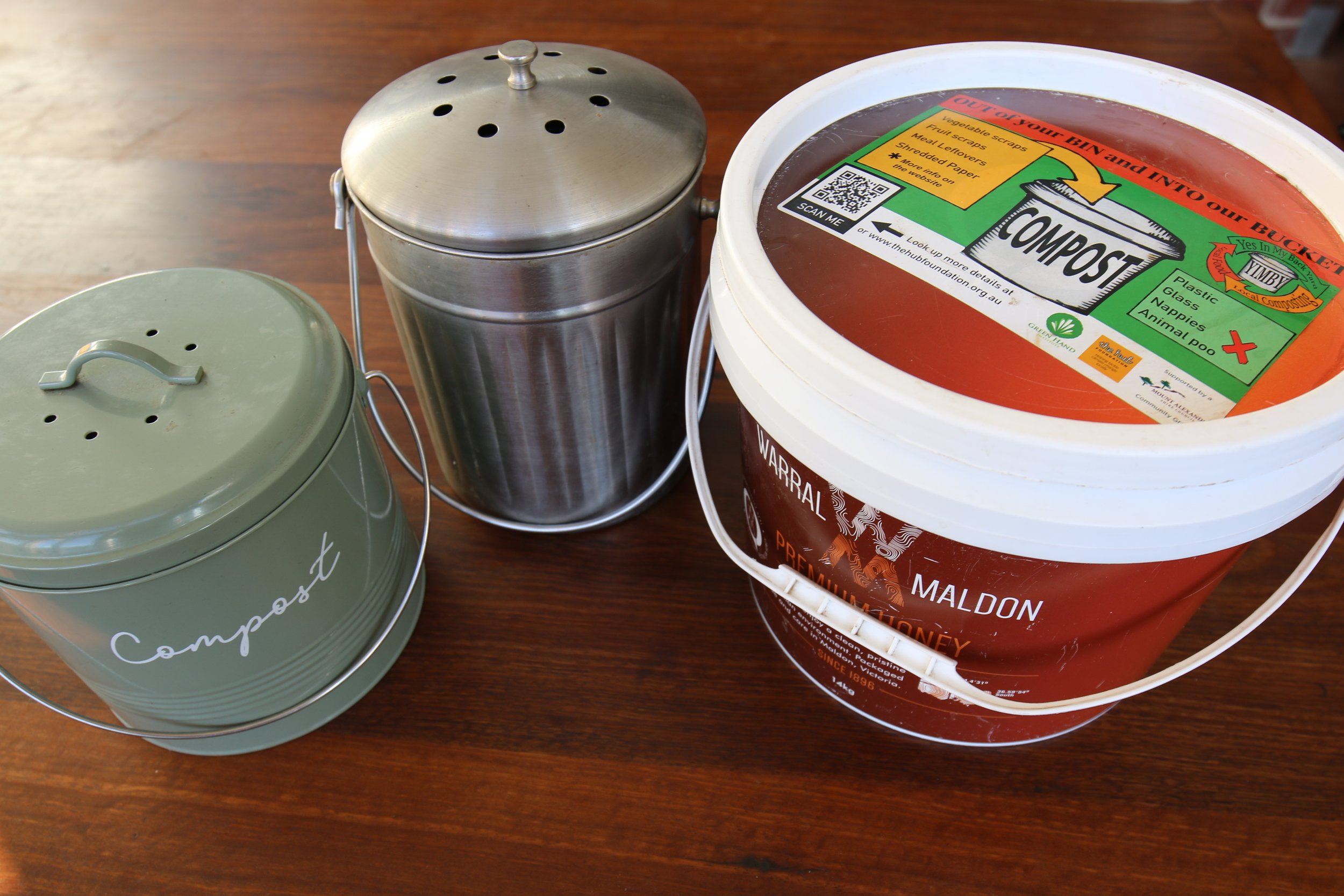Take it outside
Between the chopping board and the compost pile there sits another piece of composting ‘equipment’ that often gets overlooked, but is a critical link in our composting chain.
I grew up calling the thing in the kitchen we scrapped food scraps into the ‘compost bin’. But I have to admit it gets confusing when we also call the thing we make compost in, out in the garden, a ‘compost bin’ too. More recently the term ‘kitchen caddy’ has started to come into use. I’m calling them caddies, to be clear.
Whatever we call it, unless we are cooking outside and putting food scraps directly into our compost pile, some form of bucket, bin or caddy is going to be a helpful temporary home for the organics destined to become the next generation of fertility in our gardens.
The big variations in caddies seems to be to do with size, whether we use them with or without lids, and where they get located in our kitchen.
I’ll tell you up front, I live in a big caddy, no lid, under-bench kind of household.
Smaller caddies (2 - 5 litres) can be kept on a bench top, and that might work for households with lower outputs, but emptying a caddy too often can become tiresome. At my place there is lots of home cooking and processing food from the garden, so we generate quite a volume of food scraps every week. Our caddy is an old 15 litre food grade bucket (that was reclaimed, and has seen a good 10 years of use) and sits under the sink with no lid.
Now, I can hear a few of you exclaiming “that must smell terrible”, and you would think that, but it is surprising how rarely any smell from the caddy is noticeable. We do put a generous scoop of biochar/charcoal in the bottom of the caddy each time it gets emptied, and this does help keep odours low, but even without this, the smells can be less than you think.
If the caddy is kept behind a cupboard door and with a lid on, the action of getting food scraps into it can be quite cumbersome. Lidless compost caddies avoid the very annoying manoeuvres that require that third hand, that would be so….handy.
There are foot-operated bins that can be pressed into service as kitchen caddies, but the plastic inserts that usually come with these are notoriously thin and usually don’t stand up to the rigours of regular trips out to the garden with resultant tapping, banging and scrubbing.
Some new kitchens have dedicated draws that can be bumped with the hip, and slide out to reveal a sorter for general waste, recycling and compost. There are also hole-in-the-bench style caddies out there too. As with the foot-operated bin, check the durability, replaceability and cleanability of the compost components of these systems before investing too much. Sometimes simple is best.
At YIMBY we provide our food scrap contributing households (thank you all you wonderful people! Your contribution is very appreciated) with a 10-litre food-grade bucket (reclaimed via two local businesses). This can serve as a kitchen caddy, for those who can work that into their kitchen flow and layout, or can sit outside between weekly collections and get deposits from a smaller caddy in the kitchen.
How do you manage getting food scraps from the chopping board to the compost pile?
AUTHOR: JOEL MEADOWS
Joel Meadows works with *Yes In My Back Yard, (YIMBY), a community-scale composting initiative in Castlemaine and surrounds. Send questions or comments to hello@yimbycompost.com or to book in for a compost workshop!
This was first published in the Midland Express on 09 July 2024

